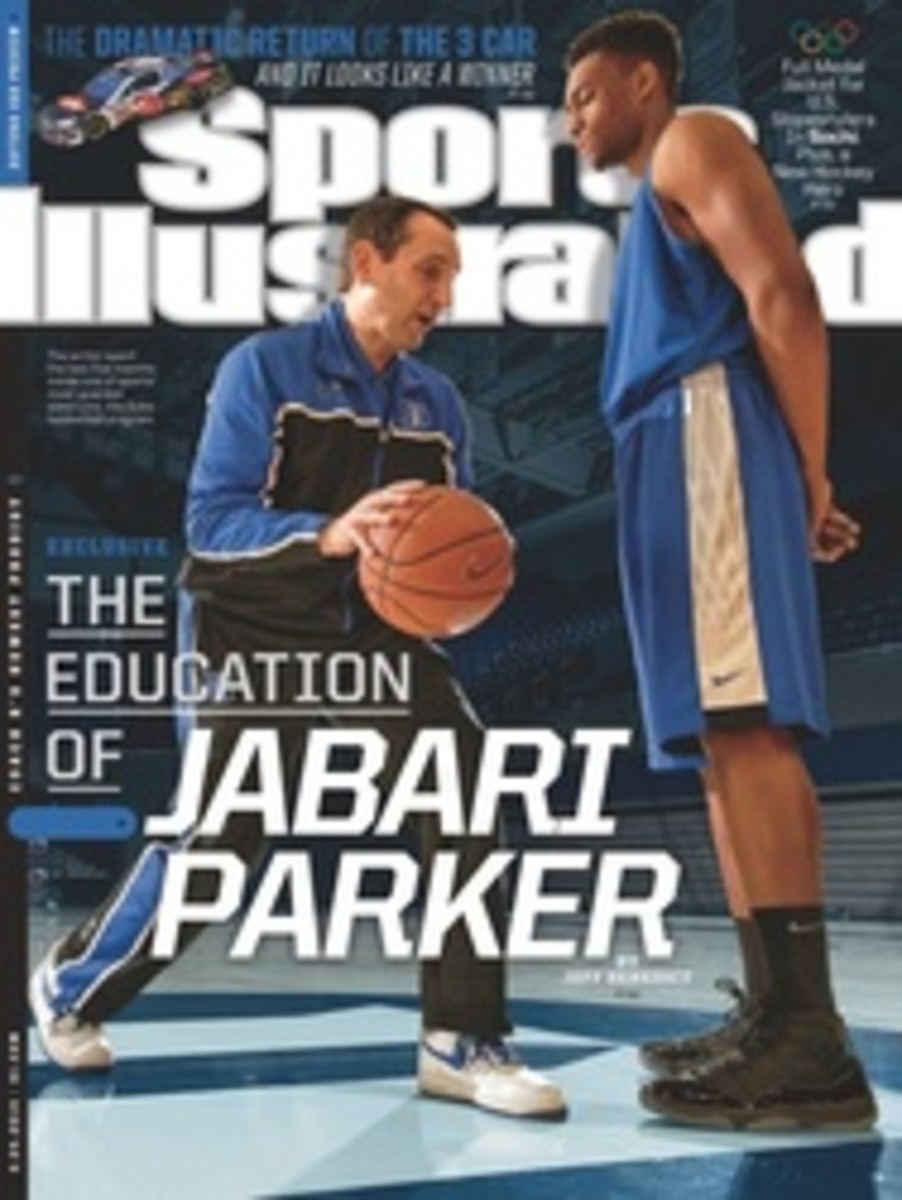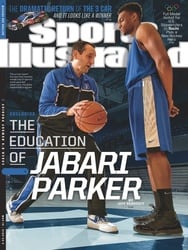
ON TOP OF THE WORLD
ONE DAY Joss Christensen, Gus Kenworthy and Nick Goepper were friends wondering who would ski the best. The next day they were looking at their faces on the Kellogg's Corn Flakes box. They had swept the podium in the Olympic debut of slopestyle skiing and become the most important meal for medal-hungry Team USA at the Sochi Games: Unusual athletes dominating extreme events.
Through Monday, 11 of the U.S.'s 18 medals had come in disciplines that weren't in the Olympics in 1998, from snowboarding to ski slopestyle to skeleton. First-time Olympic events had produced seven of the U.S. medals, a number expected to grow in the Games' final week. But the appeal of Christensen, Kenworthy and Goepper transcended numbers and novelty. They had become overnight celebrities by being exactly who they are.
America's ski slopestyle sweethearts did not emerge from a contrived marketing campaign. Kenworthy, 22, who got crazy amounts of publicity for saying during the Games that he would rescue a family of Russian stray dogs, really is, as he puts it, "always the guy running across the street to pet a random dog." When Christensen, also 22, says, "My cheeks hurt from smiling," he means it.
Mostly, they are buds, and they recognize that they are far more popular together than they would be on their own. As Goepper, 19, says, "The historic impact we made, to be the third sweep [by U.S. athletes] in the history of the Winter Olympics, is a lot bigger than we realized."
Of course they didn't realize it. How could they? Growing up, they did not dream of the Olympics, because that would be like dreaming of playing electric guitar in an a cappella group. The Olympics did not add ski slopestyle until these Games. Christensen says they skied "for fun and because we loved it."
Why would these otherwise intelligent young men flip, twirl and twist off a series of jumps and stair rails, and soar into the air at risk of great injury? And while we're on the topic: Is ski slopestyle even a sport?
"Kids fooling around," Christensen says, summarizing how critics have dismissed his event, even though it has been in the Winter X Games for 12 years. "But I've seen an insane flip of the switch since we've competed [in Sochi]. Everyone has told us how awesome it is. People see how much fun we're having."
Ski slopestyle is fun precisely because it is so risky. Goepper, who learned to ski on a 300-foot hill near his home in Indiana, says the thrill is "passing that fear boundary." Christensen, who's from Utah, has known Kenworthy, a Coloradan, since they were 12 years old, trying tricks together, pushing that fear boundary.
On the morning of the historic Olympic competition they were still challenging and encouraging each other. Kenworthy told Christensen that Christensen would win the gold medal. This was a bold prediction because Goepper was the favorite, and as Kenworthy says, Christensen has "had podiums, but he's never been The Dude." Yet Kenworthy says he knew that Christensen's run was "really technical," and if he nailed it, he would win.
By the time Kenworthy had landed his final switch triple cork 1440—three flips and four spins launched and landed while skiing backward—and the three stepped onto the podium, they were already stars. Kenworthy was not kidding about the dogs: He plans to bring a mixed-breed mom and her four puppies home, and he jokes, "They're all named Joss. Just Joss, Joss, Joss, Joss." That would be confusing because, Christensen says, "I have dibs on one." Someday we may view Christensen, Kenworthy and Goepper as the pioneers of Olympic ski slopestyle, men who both dominated and popularized their event. Or we may see this as a fringe activity for the mentally unwell. Either way, these dudes will remain stoked.
"Luckily we have a ton of other sick events we get to do," Kenworthy says, referring to the U.S. and the world championships in April, and that is a perk of being famous for being who they are.
After an SI photo shoot in the Olympic mountain village on Sunday, the three friends talked about where their sport might be headed. Bigger jumps? Crazier tricks? Or have they reached the limits?
Nobody really knows. They just know they will keep extending that fear boundary because it is why they got into this in the first place. Christensen says he plans to participate in extreme sports for a long time. Goepper says he was so scared when he appeared on Late Show with David Letterman recently, "my heart was pounding, more than any skiing-related thing I have ever done." But he did it, and by the end of an appearance-packed weekend in Sochi, they all felt comfortable in the spotlight.
No matter how many cameras are focused on them, they are still just three friends having fun together. They seem like the kind of guys who would sit at your kitchen table and dig into that bowl of cereal, wildly entertained that their faces are on the box. It is only when they put skis on and test those boundaries that they become Olympian.
"It's always good to scare yourself," says Christensen. "We've been scaring ourselves since we were young. We've gotta do bigger things now to scare ourselves."
LUGE
ERIN HAMLIN
With her students back home in tiny Remsen, N.Y., watching live at school, the three-time Olympian won the U.S.'s first singles luge medal, a bronze. Hamlin says she hopes her performance will inspire more children to try her sport.
PHOTO
Photograph by ROBERT BECK/SPORTS ILLUSTRATED
EASY AS 1-2-3 (From left) Christensen, Kenworthy and Goepper became only the third U.S. trio to sweep the podium at a Winter Olympic event.
PHOTO
NANCIE BATTAGLIA
TWO PHOTOS
SIMON BRUTY/ SPORTS ILLUSTRATED
NO FEAR HERE All three friends were drawn to the sport for its fun and risks, and in Sochi, Christensen (right) went for broke.
PHOTO

